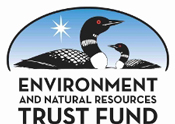Legislative-Citizen Commission on Minnesota Resources
About
The Legislative-Citizen Commission on Minnesota Resources (LCCMR) makes funding recommendations to the Minnesota Legislature for special environment and natural resource projects, primarily from the Environment and Natural Resources Trust Fund (ENRTF). These recommendations are the product of a competitive, multi-step proposal and selection process open to everyone with innovative ideas for environment and natural resources projects that can provide multiple ecological and other public benefits for Minnesota. The LCCMR also has oversight over all projects funded through its process.
The LCCMR developed from a program initiated in 1963. Since 1963, approximately $1.5 billion has been appropriated to more than 2,600 projects recommended by the Commission to protect and enhance Minnesota’s environment and natural resources.
Formerly known as the Legislative Commission on Minnesota Resources (LCMR), the Commission was re-organized into the LCCMR in 2006 with the addition of members of the public to provide citizen input more directly in the decision-making process.
Members
There are 17 members of the commission – five from the Senate, five from the House of Representatives and seven citizen members. Four members of the Senate are appointed by the Subcommittee on Committees of the Committee on Rules and Administration, and four members of the House of Representatives are appointed by the speaker. M.S. 116P.05
Senate
- Environment Finance Committee Chair or designee
- 2 from the majority caucus
- 2 from the minority caucus
House
- Environment Finance Committee Chair or designee
- 2 from the majority caucus
- 2 from the minority caucus
Citizen Members
- 5 members appointed by the governor, one of whom must be recommended by the Minnesota Indian Affairs Council
- Member appointed by the Senate Subcommittee on Committees of the Committee on Rules and Administration
- Member appointed by the speaker
Funding Sources
At present LCCMR’s recommendations to the Minnesota Legislature are for funding from one of three sources:
- The Minnesota Environment and Natural Resources Trust Fund
- Great Lakes Protection Account
- Oil overcharge funds
About Projects
Currently the LCCMR makes funding recommendations on an annual or biennial basis, with recommendations presented to the Minnesota Legislature during the legislative session. The LCCMR process is open to all eligible environment and natural resources projects that protect, conserve, preserve, and enhance Minnesota’s air, water, land, fish, wildlife, and other natural resources for the benefit of current citizens and future generations. Past projects have been in the areas of land and habitat protection, parks and trails, environmental education, natural resource information and planning, renewable energy, agriculture and forestry, and water resources. Past recipients include state agencies, private non-profits, academic institutions, local government units, federal government, tribal governments, and private corporations.
Each funding cycle, a Request for Proposal is issued for funding priorities determined by the
Commission based on its six-year strategic plan and ongoing information gathering activities,
including expert-led issue seminars and visits to natural resource sites around the state.
The LCCMR reviews, evaluates, and ranks all proposals submitted. A selection of the highest ranked
proposals is invited to present before the LCCMR. Finally, based on the total dollars available, a
subset of those proposals is chosen to be recommended to the Legislature for funding. In addition to
review by the Commission, proposals may also be reviewed by peer review committees or technical
advisory committees.
The LCCMR’s funding recommendations go before the Minnesota House and Senate in the form of a
bill, and upon passage the bill goes the Governor to be signed into law. Funding becomes available to
projects beginning July 1 of the next fiscal year after approval of a work plan by the LCCMR.
Projects that are approved for funding are overseen by the LCCMR for the duration of their funding
period. Projects must submit a work plan to be approved by the Commission, provide ongoing project
updates, and deliver a final report upon project completion.
A biennial report with accomplishments of completed projects, recommendations for future funding, and the
current strategic plan for the Environment and Natural Resources Trust Fund is submitted to the full
legislature on January 15 of the odd-numbered years.
Staff
Environment and Natural Resources Trust Fund (ENRTF):

A permanent environment and natural resources trust fund is established in the state treasury. The assets of the fund shall be appropriated by law for the public purpose of protection, conservation, preservation, and enhancement of the state's air, water, land, fish, wildlife, and other natural resources. The assets of the fund shall not be used to pay the principal or interest of any bonds. The assets of the fund shall not be used to pay for any costs related to the construction, repair, improvement, or operation of any facility or system that processes wastewater, but may be used to pay for research related to wastewater. The amount appropriated each year of a biennium, commencing on July 1 in each odd-numbered year and ending on and including June 30 in the next odd-numbered year, may be up to seven percent of the market value of the fund on June 30 one year before the start of the biennium. Not less than 40 percent of the net proceeds from any state-operated lottery must be credited to the fund through December 31, 2050.
Contact Information
| Location | Centennial Office Building, 1st Floor 658 Cedar St. St. Paul, MN 55155 |
|---|---|
| Phone | (651) 296-2406 |
| Fax | (651) 296-1321 |
| Website | www.lccmr.mn.gov |